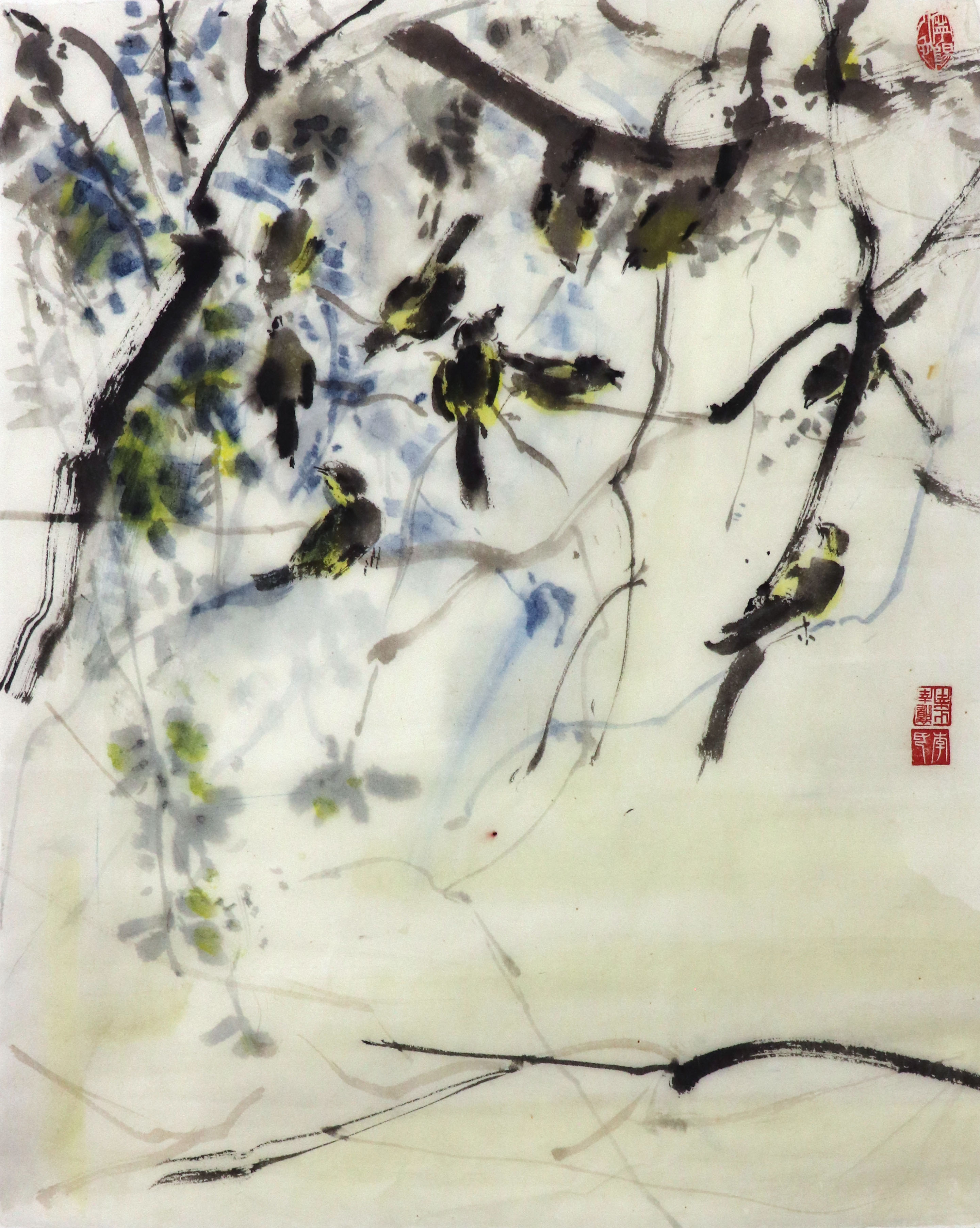Teaching: old ways and new

As I prepare to teach in-person art classes for the first time in over a year, I am thinking about Chen as a teacher.
For those of us who were his long term students, we learned the old way. A group of us gathered every week at a studio or at a student’s home. Chen would give painting demonstrations, tell stories, discuss philosophy and give us feedback on our work. He was fully engaged in every moment: looking thoughtfully at the paper before embarking on the painting, pausing before adding a brush stroke, sitting back and declaring the painting finished. Nothing felt as if it was being done by rote or was a repetition of the past. Chen was fully present, delightfully present, absolutely enchanted by what was happening in the moment. That was the element that kept me engaged.
But as students we had to rely on ourselves to be observant, to catch the way Chen was using the brush, to come to an understanding of how to create a composition, how to use space and tone and color and form. That is the old way of teaching. The teacher does. The students catch on to the best of their ability.
I am working with Chen in the printmaking studio. It is summer time. The sun is pouring through the tall south facing windows. We’re inking up the lithography stone and cranking it through the press. It is hard work. Sweat is pouring down our faces. It is also very technical work. Hot or not, you have to pay attention.
Chen looks across the press at me. “Got to be crazy!” he remarks.
I get it. Being an artist sometimes makes no sense. But there was a logic to how Chen was teaching me. Chen was fully engaged in the process of creating the print. He would tell me what to do but not how to do it: grind the stone, get it over here, get the artist to draw tomorrow, buff it down, roll it up, less ink, more water, quick, do it now!
We are working on a stone one day and have just gotten to a crucial step. Chen reaches in his pocket and hands me a dollar bill. There is a diner around the corner called St. George’s.
“Get me a coffee,” Chen says.
“You’ll do the critical step while I’m gone,” I reply.
“No, no, get a coffee.” Chen insists. I go. I come back.
“You did it while I was gone!” I protest.
“Quick, no time. Get the roller, got to ink it up.”
That’s how it worked: I had to be super observant to figure out every detail of lithography, and it is a highly complex and exacting process with lots of details.
A few weeks later I’m working on a stone and I get to the same step where Chen sent me out for coffee. I apply the acid, I wait the proper amount of time. I buff the stone and remove the drawing material. Time to roll up.
“Hey,” Chen drawls the word out. “You been watching too carefully. Here, write this down.”
Now that he sees that I’ve observed carefully, no doubt tried it several times on my own, worked it out for myself, now Chen wants to give me all the meticulous details.
That’s the old way.
I know that Chen had to figure out how to teach when it was with a class full of students, when they were only in the studio for set periods of time, when there was a semester deadline, when the students had an expectation that a certain number of skills were going to be learned in exchange for tuition paid to the school.
Anyone who teaches in this day and age grapples with this issue. It doesn’t matter where we are in the world or what the subject matter. How much do we adapt our teaching and in what way?
Do we have a lesson plan and course objectives?
Do we tell the students at the beginning of each class what they will be learning and repeat at the end of class what they were just taught?
Will students still own the knowledge as fully as when they had to put more effort into figuring out what it was that even needed to be learned?
Some things can be taught by formula, but what about the things that are more complex, or intangible or that require the unique input of the student?
The composition of the painting “Birds in Branches” by Chen Lok Lee, shown at the top of this post, cannot easily be taught by formula!
Chen adapted some of his teaching methods for the students he taught at Moore College of Art. I still ponder what is the best way to teach, but I have certainly made adaptations; I don’t teach only the old way.
Regardless of the manner of teaching, I take fully to heart Chen’s statement: “I know I am a good teacher, because each of my students’ art is completely different.”
Joon Thomas | Contact me or visit my website
Teaching: old ways and new Read More »